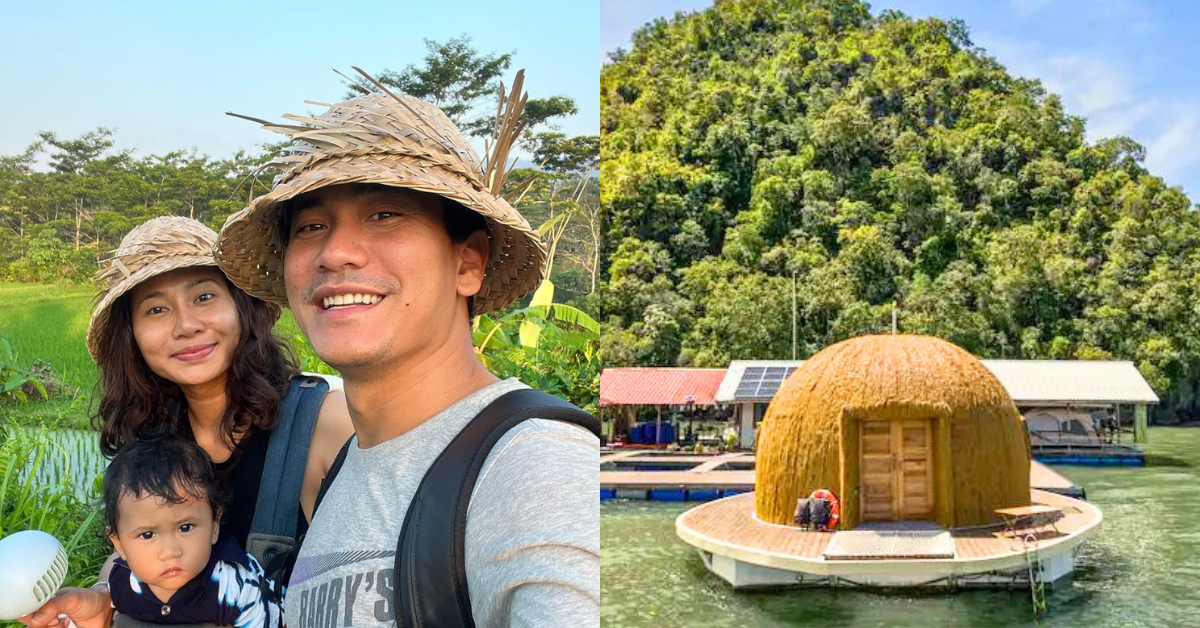By now, you’ve probably seen videos of Coconest across the internet. Designed to look like a coconut at sea, this overwater bungalow in Langkawi recently opened for booking a few months ago.
But its appearance isn’t the only interesting thing about this stay.
Coconest isn’t connected to any land, so you would actually be like a coconut floating untethered to anything. This also provides a 360 view of the surrounding landscape, including a nearby island and Gorilla (or King Kong) mountain.
Its unique placement aside, what really drew me to Coconest is the fact that this stay was the result of Airbnb’s inaugural OMG! Fund competition in 2022.
And Reena and Hakim, the founders of Coconest, were one of 100 global winners given US$100,000 each by Airbnb to bring their vision to life in less than a year.
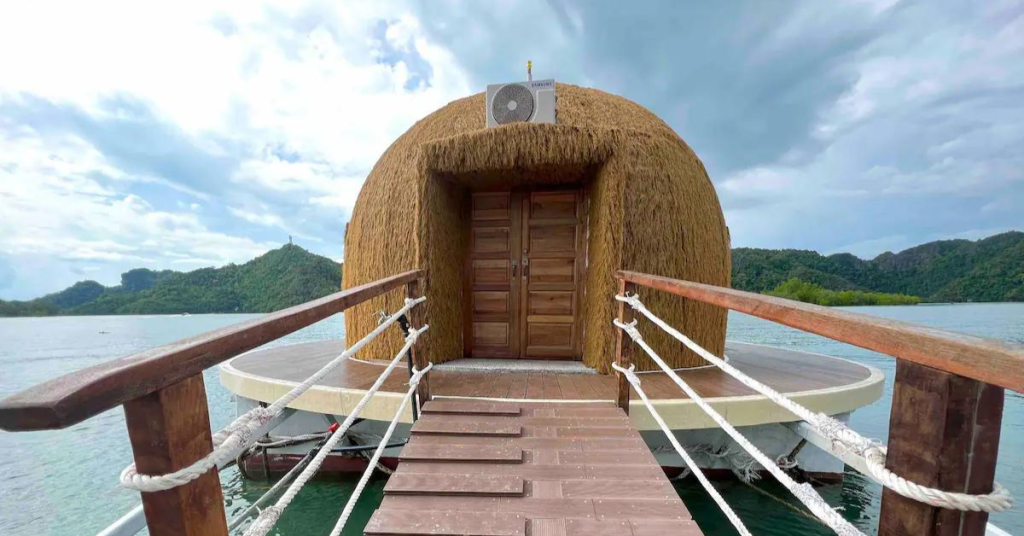
Unique, sustainable, and immersive
With Hakim coming from an architectural background, it shouldn’t be surprising that the couple would enter such a competition. But the idea to take part in it came down to one thing—free entry.
In his experience, the 34-year-old shared that this is the first design-build competition that was free to enter. So they figured there was nothing to lose, except for a few minutes of their time.
“We do recall thinking how awesome it would be to represent Malaysia in this competition if we were to earn one of the 100 spots, so we applied,” Hakim said.
To join the competition, candidates are required to first submit a 1,000-word essay to explain their idea. Based on the official rules, the idea needs to meet the following selection criteria:
- 40% crazy, unique, extraordinary: In terms of the location of the space, and creativity and uniqueness of the design.
- 40% feasible: In terms of whether the design is financially and/or logistically feasible, and whether the project is reasonably likely to be completed within the required timeframe and proposed budget.
- 10% sustainable: In terms of the design’s incorporation of environmentally sustainable attributes and consideration of offsetting environmental concerns.
- 10% immersive experiences: In terms of the overall guest experience that is created through this design.
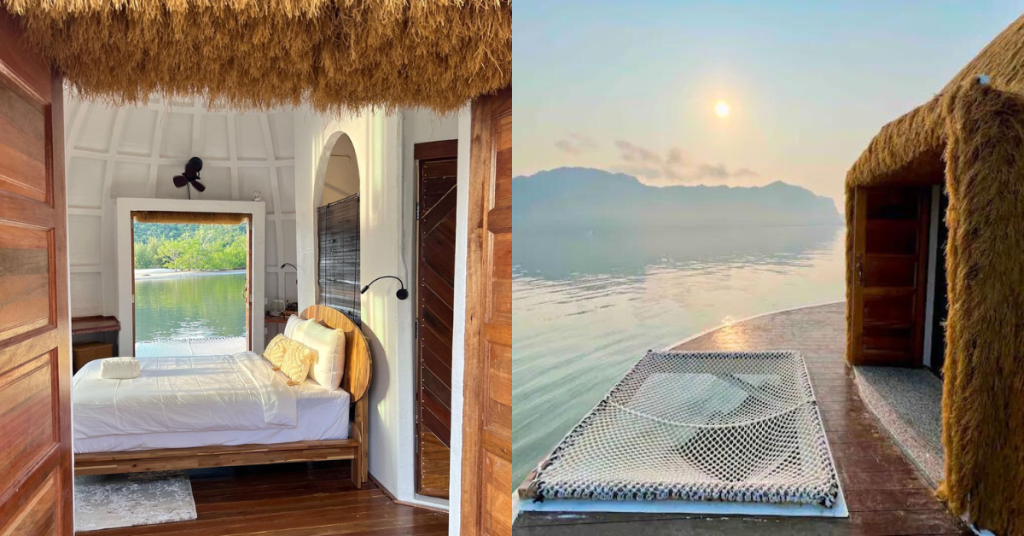
Fortunately for them, they already had an idea in mind. So it only took about 20 minutes to complete the essay.
“Coconut Drifting in the Sea”
Speaking candidly, Hakim explained that the idea came from Reena’s dream of having her own floating platform.
You see, she started a water activities company called H2Ocean Resources some years ago. It operated off an existing floating platform in Tanjung Rhu. At the time, she was only leasing the space for her business.
But after spending so much time there, she learnt to appreciate the beauty that Tanjung Rhu had to offer. And her thought of building more businesses around the area to elevate the beach’s name in Langkawi grew.
“We wanted to share the experience of being on a floating structure in Tanjung Rhu,” Reena explained.
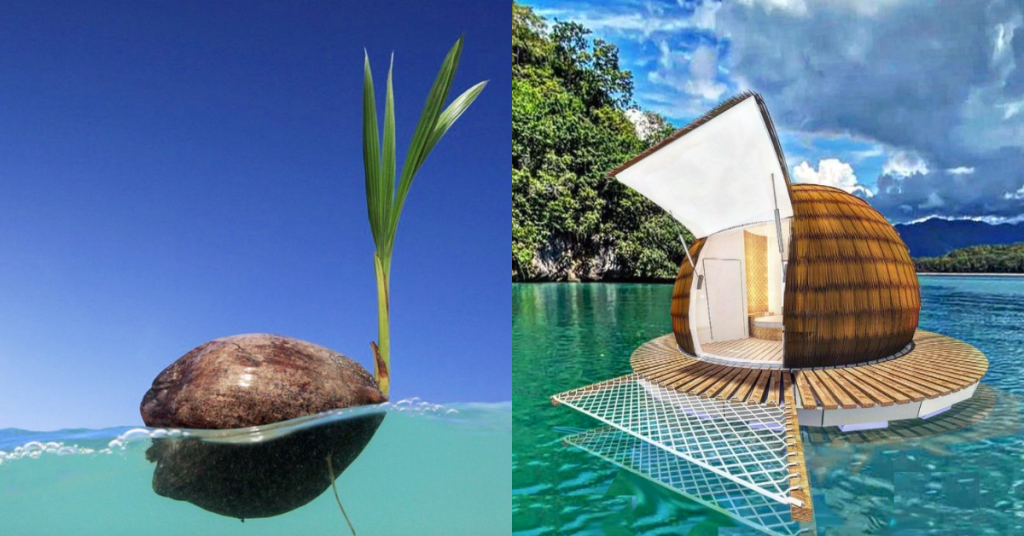
What came out of that is what you see today, then called the “Coconut Drifting in the Sea”.
Being a part of the winner’s circle
Phase Two of the competition was more technical. Participants had to submit design plans, drawings, mock-ups, photographs, and/or videos.
This was where they had to explore the feasibility of the project in detail, including how to construct an actual floating coconut-looking dome structure.
“We explored materials, general assembly, and various design components of the project,” Hakim explained. At the same time, they looked for contractors and talked to local boatwrights to find out where and how they could build Coconest.
Of the 500 candidates, only 200 were selected into the third and final stage. To be part of the winner’s circle, participants were asked to submit a minute-long video of themselves explaining the space, building timeline, and budget allocation.
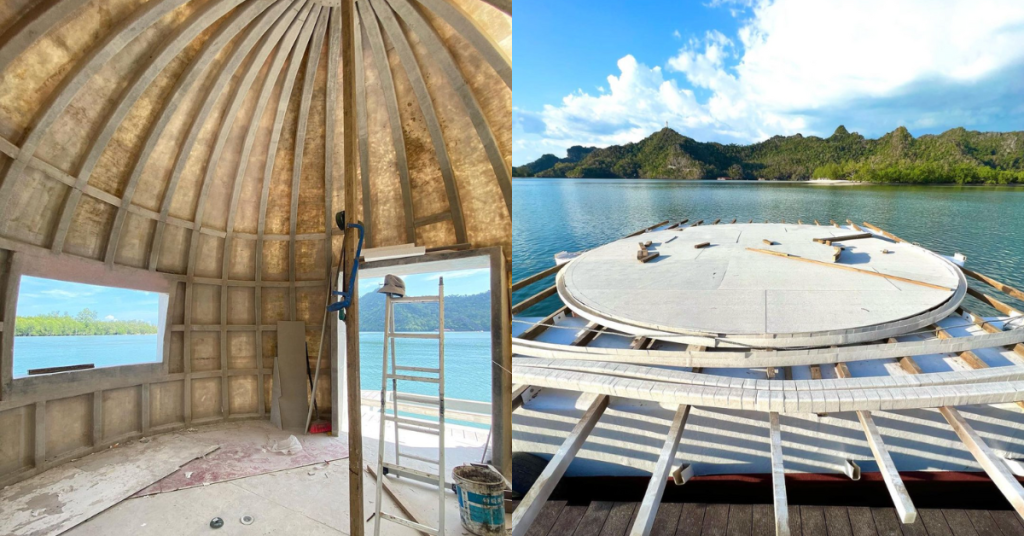
By early October 2022, Airbnb announced the 100 champions that won from the pool fund of US$10,000,000.
Not just an Airbnb, but a conservation site too
Going through the list of winners, you’ll notice that the competition was tight. There were people submitting homes shaped like a giant flower pot, a giant pig-shaped stay in a pig sanctuary, and a livable giant fossilised snail in the desert.
So how did Hakim and Reena’s idea be part of such a crowd?
“We believe it’s the fact that we spent a decent amount of time researching feasibility and putting together a detailed deck of how this idea would be executed. That as crazy as it sounds, it’s 100% possible.”
“We had the right construction team, right design team, right community that would support us, and the right project site to do it,” they shared.
Aside from that, though, I personally find the sustainability element to be another hook.
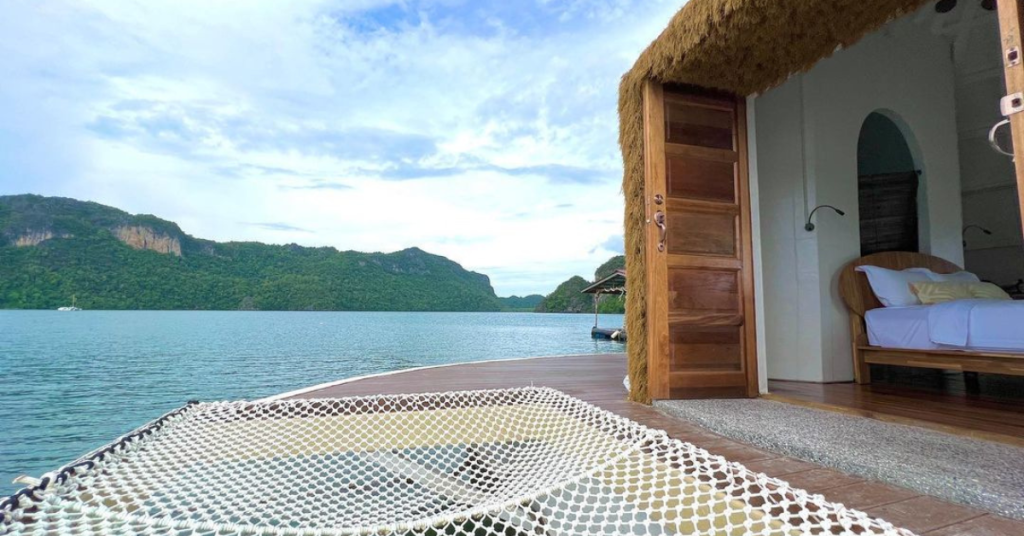
Coconest wasn’t intended to just look intriguing. The goal was to build it in Tanjung Rhu off an existing fish farm platform. Then eventually, introduce a coral nursery to teach guests how to plant and grow corals.
A cause that’s closer to home
Since the couple lived in Tanjung Rhu, they found that the local coral habitats were slowly being destroyed due to over-tourism. This is an issue that many tourist attractions face, and is why some like Pulau Sipadan in Sabah close for conservation at times.
In Hakim and Reena’s own experience, they found that scuba dive hotspots like Pulau Dangli have more garbage and dead corals than it did two years ago.
“There is no system or programme in place to educate the community on the importance of preserving these delicate habitats. Nor is there a programme in place to replenish or grow these habitats. If the habitat dies, it takes with it the tourism opportunity,” he explained.
So by having a coral nursery at Coconest, they bring added value to the tourism space while doing their parts for environmental conservation.
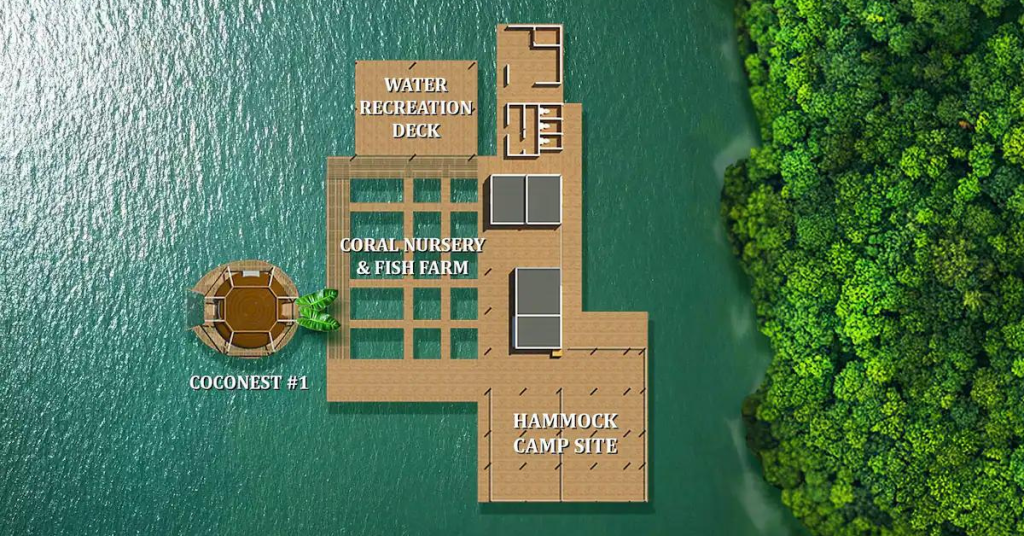
In this spirit, he disclosed that 25% of the US$100,000 fund they received went into renovating the fish farm. By expanding it, they hope to create a controlled “pool” where people can practice coral-planting before doing it in the open sea.
Keeping locals in mind throughout the project
Thus far, it’s only been about four months since Coconest officially opened its doors. The reception has been quite good, with 85% of bookings coming from Malaysians.
To encourage more locals to visit, they actually provide discounts.
If your booking isn’t within two days of check-in, there will be an automatic 30% discount applied. Which is a decent rebate as it typically costs nearly RM600 per night.
“We also did a 50% promotion in the beginning of the project and in 2024 we plan on bringing that promotion back, but in a limited form offered specifically to local Langkawians only,” the couple expressed.
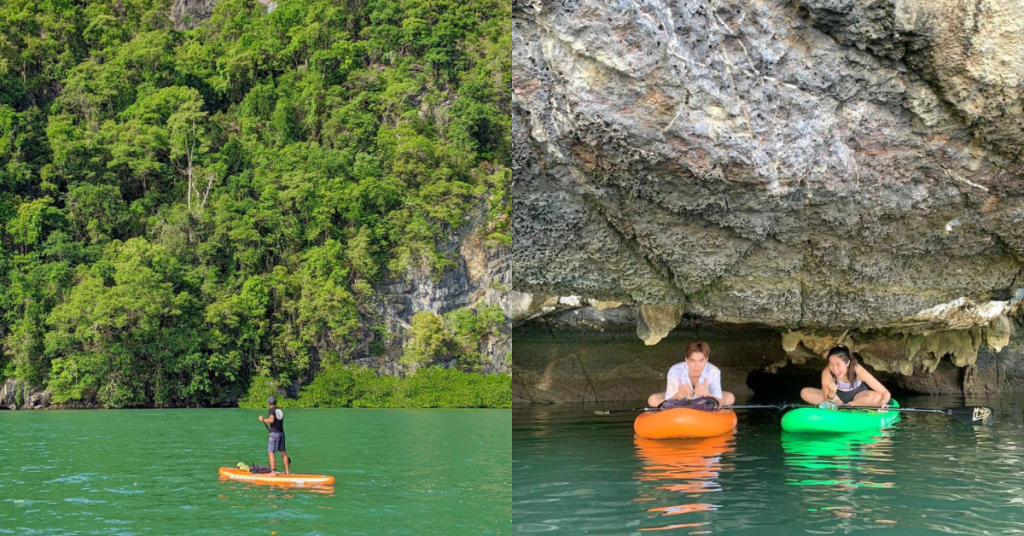
During your stay at Coconest, you’ll also get an in-house discount to some of H2Ocean Resources’ activities, including paddle board tours and catamaran bike tours.
An ambitious goal that’s for the people
“Our next immediate goal is to apply for the tourism grant in Malaysia because we believe that the coral nursery and Coconest both can attract tourists. Not only to Langkawi, but specifically to Tanjung Rhu,” they shared.
It’s a personal goal of Reena’s. For the longest time, she’s been wanting to boost the visibility of Tanjung Rhu to the world. This is especially because most people that visit Langkawi usually only know Chenang or Kuah.
So in line with this long-term vision of elevating Tanjung Rhu, they plan to build another two to three Coconests. These would accommodate larger families, as the current one only fits two people.
“Our dream is to build a prefabricated modular workshop that specialises in dome construction built to float on water. Then sell and ship it all over Malaysia and the APAC region. The idea is that it would be easily assembled and produced in Malaysia.”
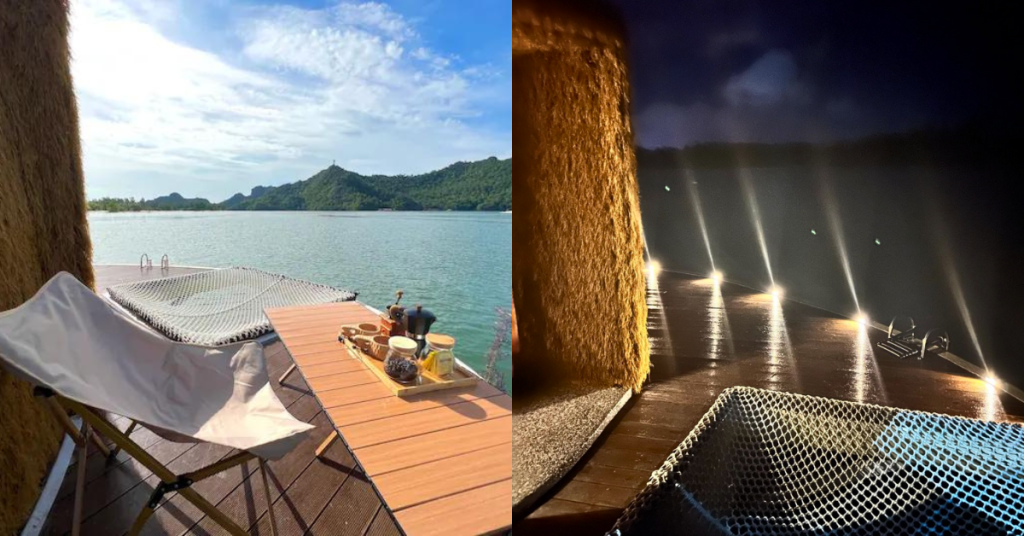
If this plan pans out, it would help to generate more income for the couple to channel into their tourism efforts. So perhaps we’ll see Tanjung Rhu as the highlight of Langkawi in the near future.
Featured Image Credit: Coconest

